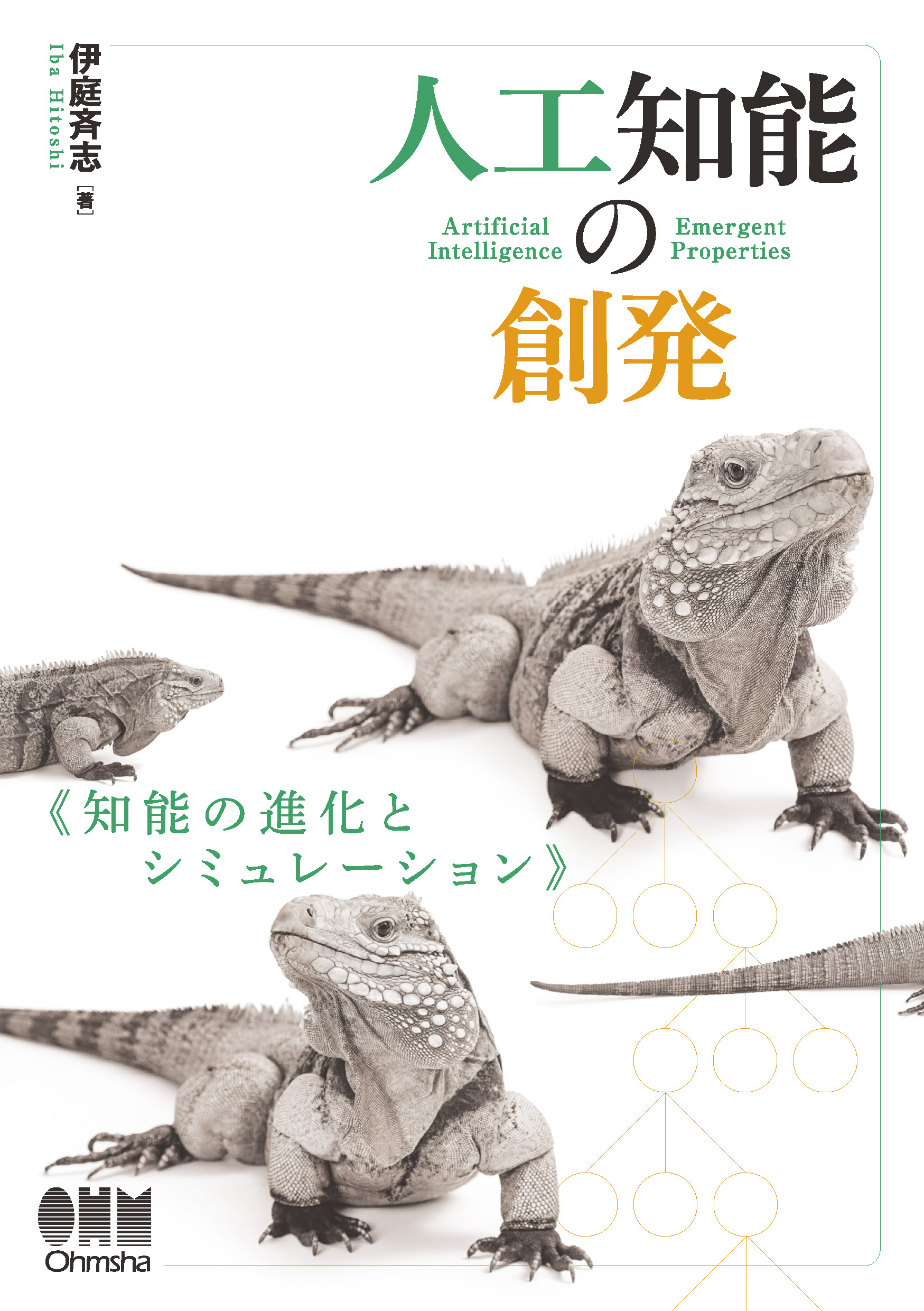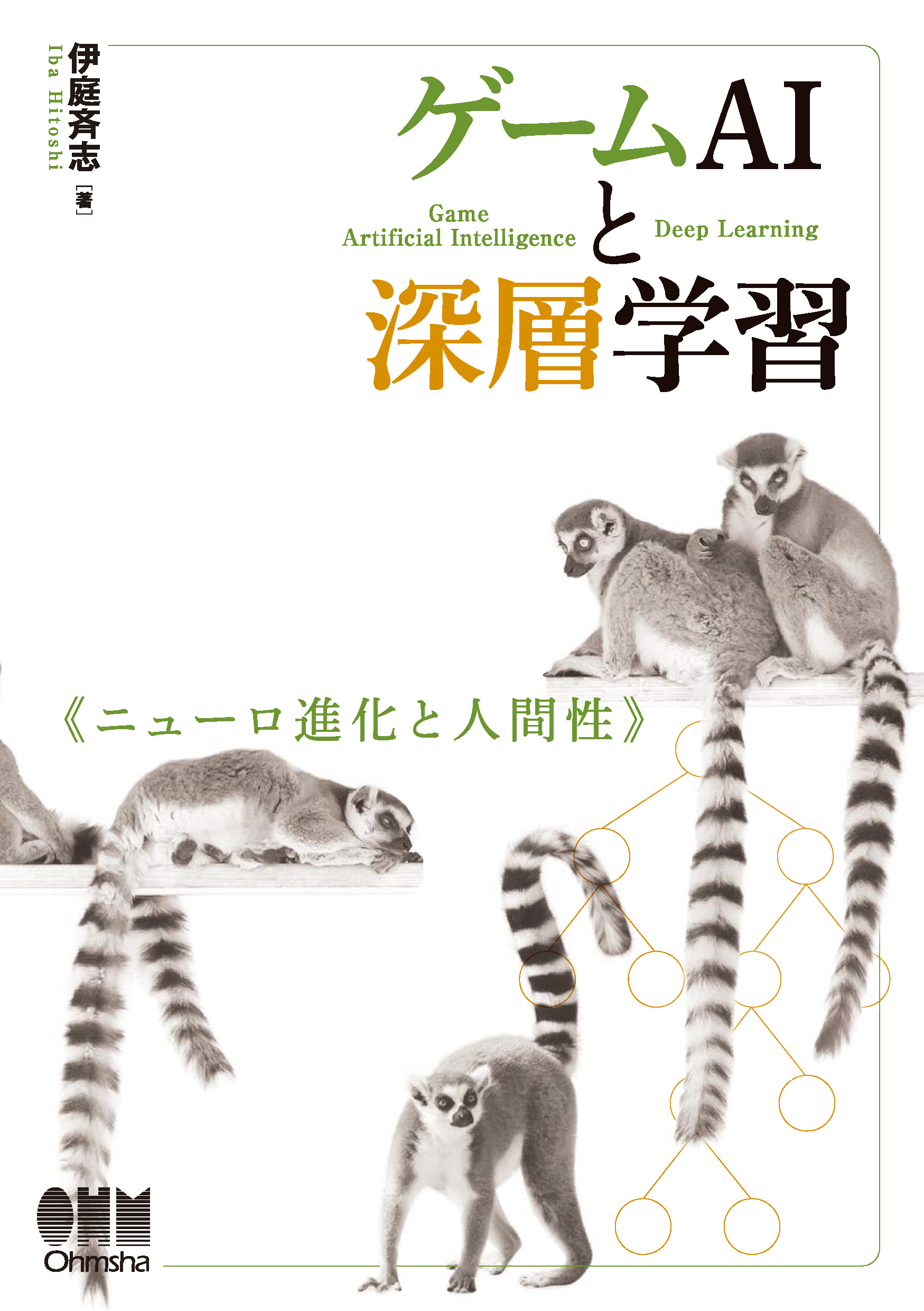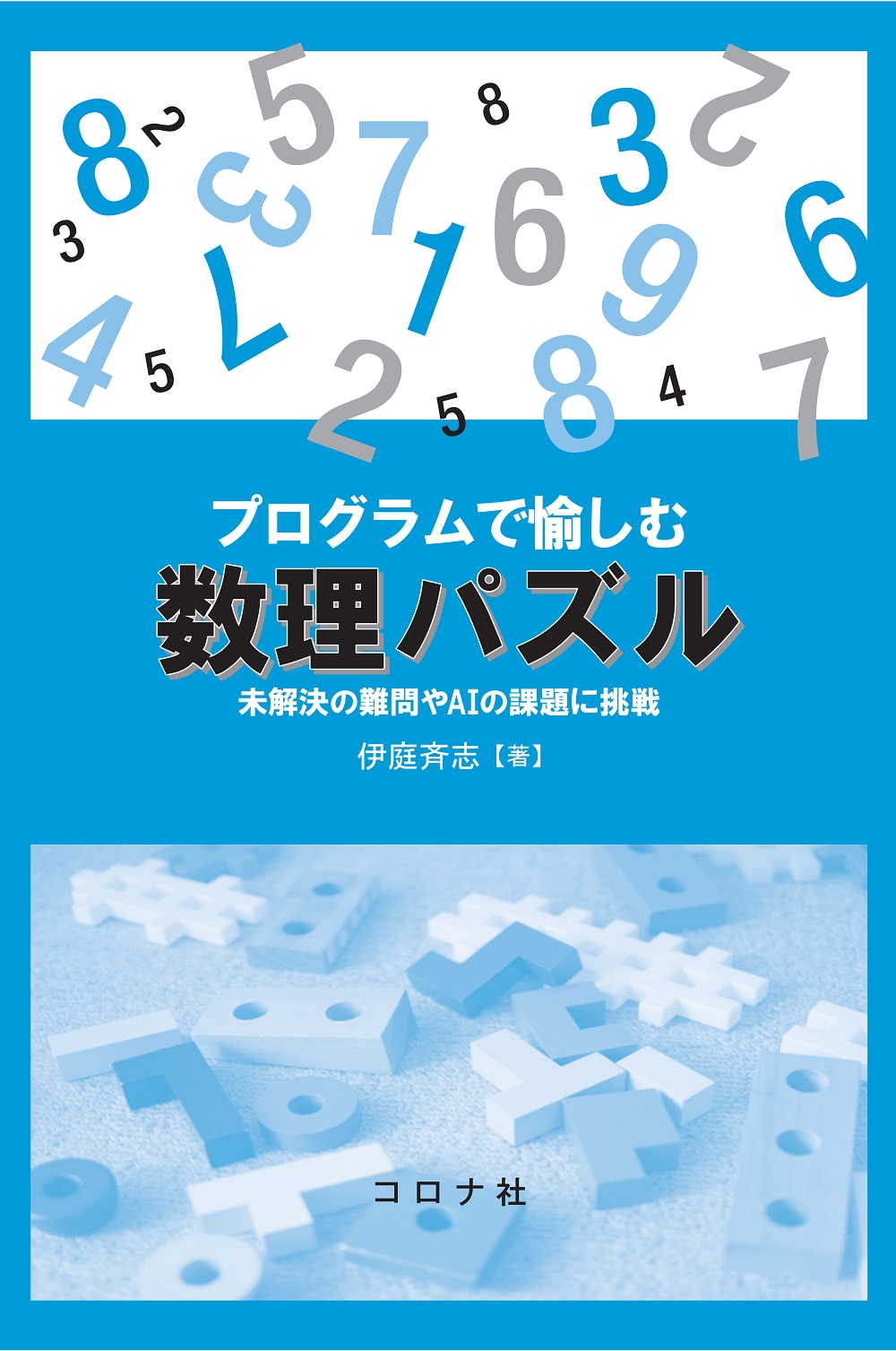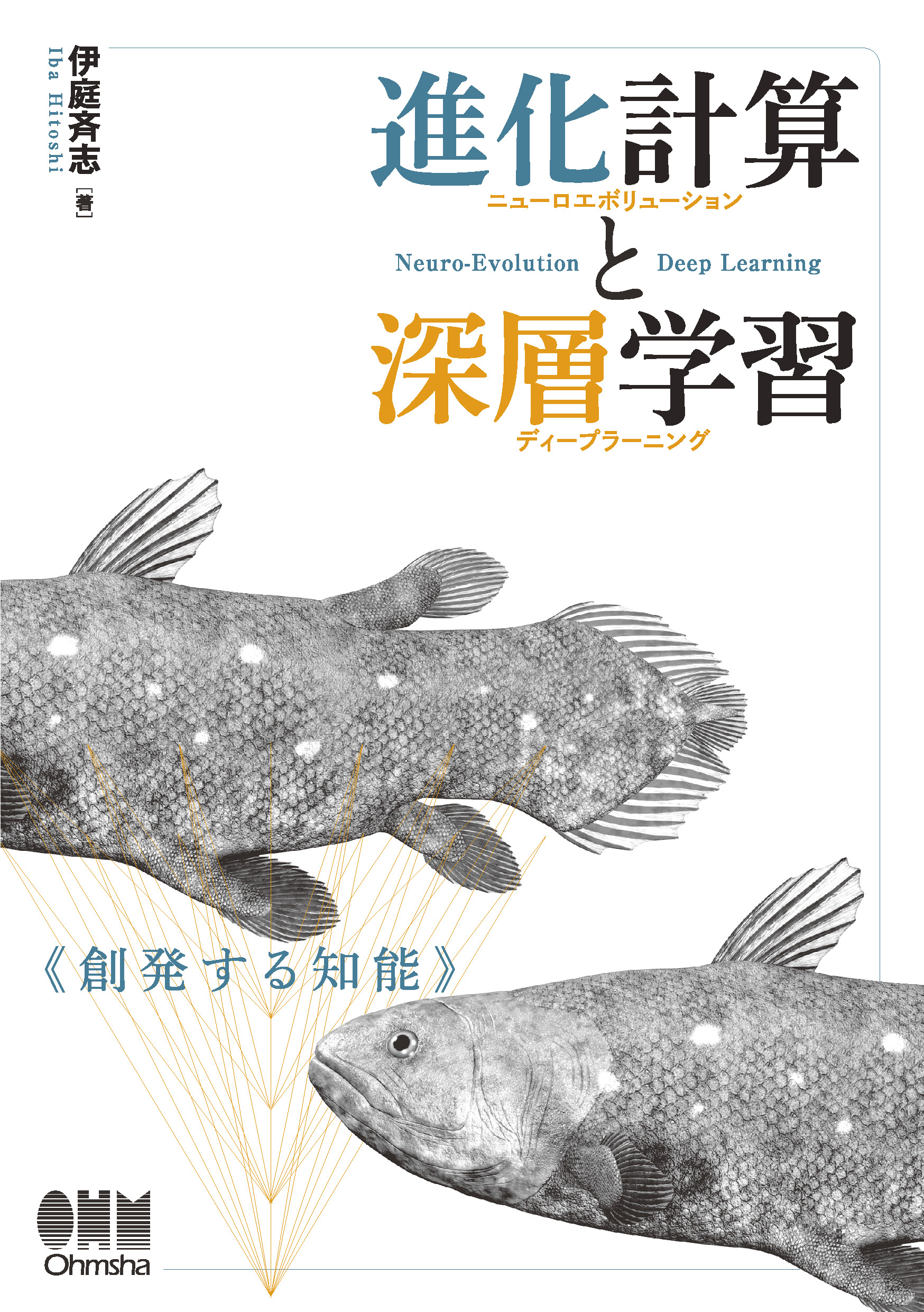
Title
Jinkouchinou no souhatsu (Emergence of artificial intelligence - Evolution of intelligence and its simulation)
Size
244 pages, A5 format
Language
Japanese
Released
May, 2017
ISBN
978-4-274-22064-7
Published by
Ohmsha, Ltd.
Book Info
See Book Availability at Library
Japanese Page
This book is a description of “emergence” with regard to artificial intelligence (AI). Recently, people have said that we are in the third wave of AI, which can partly be attributed to (1) machine learning based on statistical theory and (2) deep learning, which further developed neural networks. However, there is room to doubt whether that is enough for true AI (also known as human-like “general AI” or “strong AI”). Numerous previous studies have shown that there is a depth to human intelligence and cognition that cannot be captured by these AI methods.
I have been researching the computation of evolution and emergence for close to thirty years now, and these mechanisms provide a glimpse into the principles of the intelligence of humans and other organisms. In this book, I describe these AI-related topics in detail from theoretical background to recent developments and future challenges.
Some readers may wonder how several of the topics are connected to AI technology. It is believed that AI is originally about finding problems. This means that as soon as it solves the problem, it ceases to be AI. Rodney Brooks, who has been active as an AI researcher at MIT since the 1980s, jokes that “AI means ‘almost implemented.’” He has proposed numerous revolutionary ideas regarding AI and is also famous as the father of the Roomba robotic vacuum (being the founder of the American company, iRobot). Would that mean that robotic vacuums are no longer AI since they are already being sold on the market?
AI is currently dominated by technical applications and announcements that seem lofty at first glance. Of course, this book is not meant to reject those aspects, and I am personally participating in such projects. However, whether that alone is enough is another issue. Since anything and everything related to intelligence can be linked to AI, we cannot ignore basic research that gets us closer to the essence of intelligence and life.
The goal of my research is to model the human cognitive function from the perspective of emergence. In other words, I would like to understand how intelligence originally appeared, map it to the real world, and describe its causal relationships to actual physical and chemical mechanisms. To do this, it is essential not only to understand the behavior of the intellect itself but also the causes of that behavior and how those causes influence it. This is why this book describes the emergence of cognitive errors, cognitive dissonance, irrational behavior, and cooperation and defection in various people. Unfortunately, it is difficult to describe these phenomena using the statistical models of machine learning or Big Data-based deep learning that are the core technologies of today’s AI. Instead, it may be necessary to turn that approach the other way round. The simulation model of emergence that I describe in this book is an important approach in elucidating the essence of intelligence and can contribute to making true AI a reality.
(Written by IBA Hitoshi, Professor, Graduate School of Information Science and Technology / 2020)
Table of Contents
Chapter 2 Emergence of complex systems
Chapter 3 Traffic jams and cognitive errors
Chapter 4 Emergence of cooperation and deception
Chapter 5 Utilities and multi-objective optimization
Chapter 6 Prospective theory and evolution of cultures
Related Info
http://www.iba.t.u-tokyo.ac.jp/support/index.html



 Find a book
Find a book


 eBook
eBook




